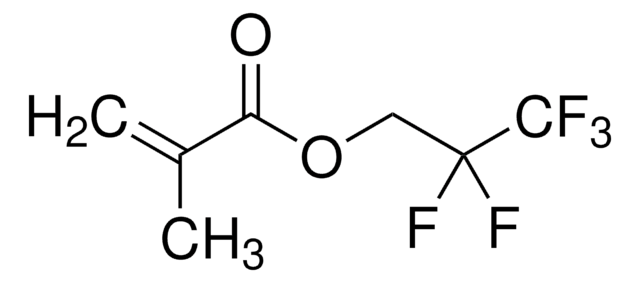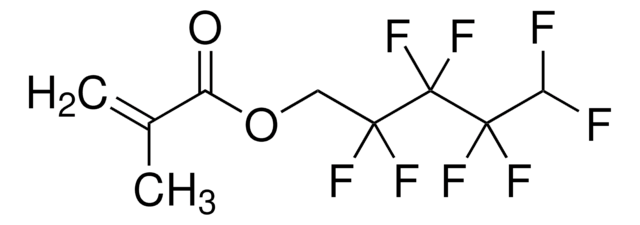373761
2,2,2-Trifluoroethyl methacrylate
contains 50-200 ppm MEHQ as inhibitor, 99%
Synonym(s):
2,2,2-Trifluoroethyl 2-methylprop-2-enoate
About This Item
Recommended Products
assay
99%
form
liquid
contains
50-200 ppm MEHQ as inhibitor
refractive index
n20/D 1.361 (lit.)
bp
59 °C/100 mmHg (lit.)
density
1.181 g/mL at 25 °C (lit.)
storage temp.
2-8°C
SMILES string
CC(=C)C(=O)OCC(F)(F)F
InChI
1S/C6H7F3O2/c1-4(2)5(10)11-3-6(7,8)9/h1,3H2,2H3
InChI key
QTKPMCIBUROOGY-UHFFFAOYSA-N
Related Categories
General description
signalword
Danger
hcodes
Hazard Classifications
Acute Tox. 3 Inhalation - Acute Tox. 3 Oral - Aquatic Chronic 3 - Flam. Liq. 2
Storage Class
3 - Flammable liquids
wgk_germany
WGK 2
flash_point_f
62.6 °F - closed cup
flash_point_c
17 °C - closed cup
ppe
Eyeshields, Faceshields, Gloves, type ABEK (EN14387) respirator filter
Choose from one of the most recent versions:
Already Own This Product?
Find documentation for the products that you have recently purchased in the Document Library.
Customers Also Viewed
Articles
Polymeric materials, with unique refractive index properties, find applications in photonics and optical coatings for various devices.
Our team of scientists has experience in all areas of research including Life Science, Material Science, Chemical Synthesis, Chromatography, Analytical and many others.
Contact Technical Service











